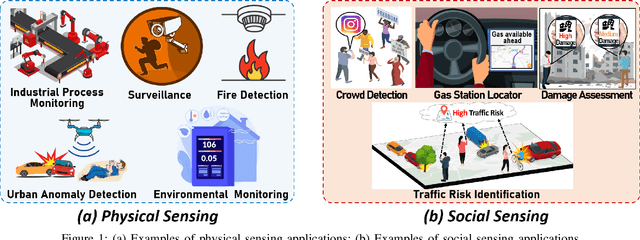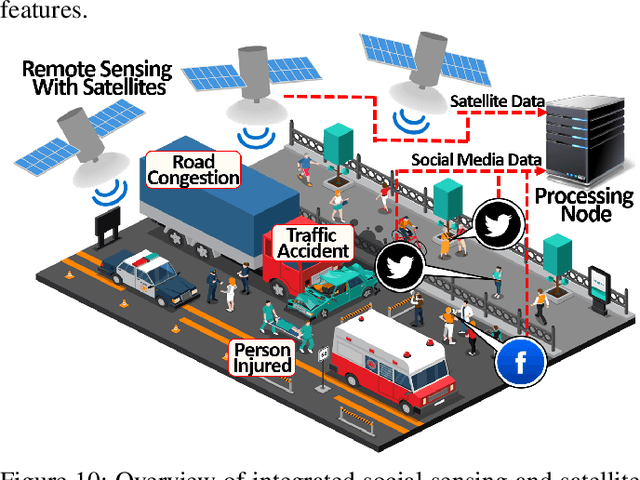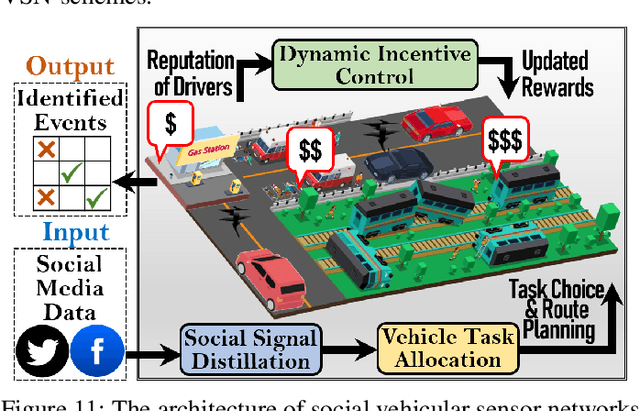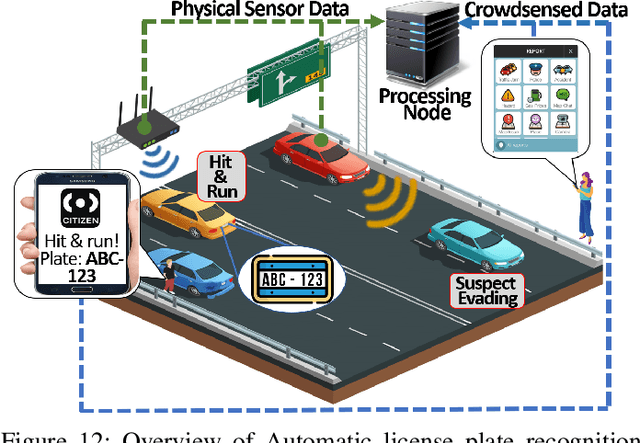A Survey on Social-Physical Sensing
Paper and Code
Apr 03, 2021



Propelled by versatile data capture, communication, and computing technologies, physical sensing has revolutionized the avenue for spontaneously capturing and interpreting real-world phenomenon. Despite its virtues, various limitations (e.g., high application specificity, partial autonomy, and sparse coverage) hinder physical sensing's effectiveness in critical scenarios such as disaster response. Meanwhile, social sensing is contriving as a pervasive sensing paradigm that leverages the observations from human participants equipped with portable devices and ubiquitous Internet connectivity (i.e., through social media or crowdsensing apps) to perceive the environment. While social sensing possesses a plethora of benefits, it also inherently suffers from a few drawbacks (e.g., inconsistent reliability, uncertain data provenance, and limited sensing availability). Motivated by the complementary virtues of both physical and social sensing, social-physical sensing (SPS) is protruding as an emerging sensing paradigm that tightly integrates social and physical sensors at an unprecedented scale. The vision of SPS centers on mitigating the individual weaknesses of physical and social sensing while exploiting their collective strengths in reconstructing the "state of the world", both physically and socially. While a good amount of interesting SPS applications has been explored, several important unsolved challenges and open research questions prevail in the way of developing dependable SPS systems, which require careful study to address. In this paper, we provide a comprehensive survey of SPS, with an emphasis on its definition and key enablers, state-of-the-art applications, potential research challenges, and road-map for future work. This paper intends to bridge the knowledge gap in current literature by thoroughly examining the various aspects of SPS crucial for building potent SPS systems.
 Add to Chrome
Add to Chrome Add to Firefox
Add to Firefox Add to Edge
Add to Edge